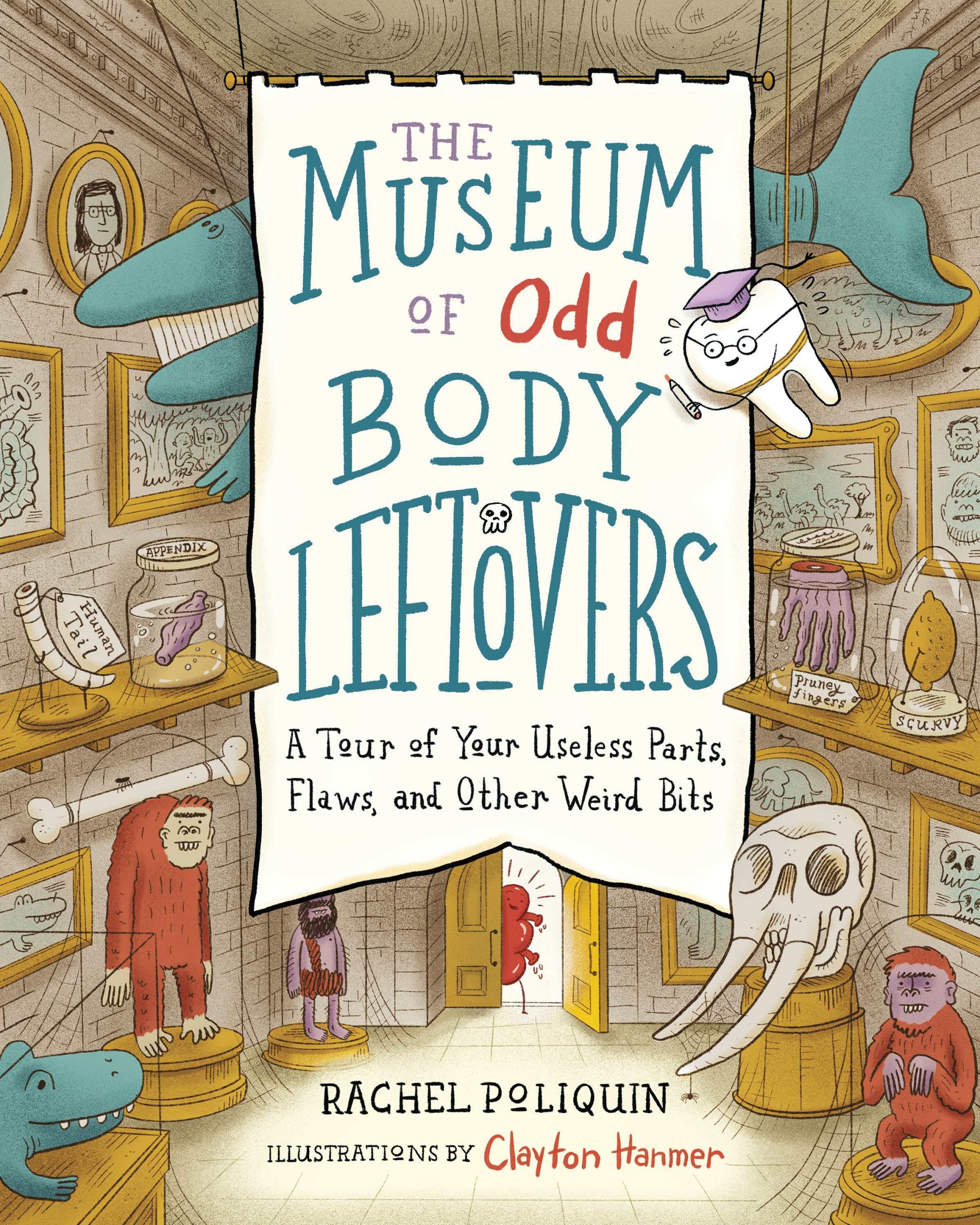by Rachel Poliquin, illustrated by Clayton Hanmer
c.2022, Greystone Kids $18.95 88 pages
You don’t need that.
Ugh, it’s so frustrating when you ask someone for something and they just say “no” right away. Why didn’t they think about it first, or ask your intentions? What if you spend your own money or find that thing yourself? As a kid, you probably hear “you don’t need that” a lot but in the new book “The Museum of Odd Body Leftovers” by Rachel Poliquin, illustrations by Clayton Hanmer, some things really are so extra.
Let’s face it: your body is a wonderful piece of machinery. It lets you run and play and write and read and do all kinds of fun things. But there are things inside you that are “useless… leftovers” and “bad patch jobs.” They’re called vestigial structures, and there was once a time when the human body did need those parts. Not anymore.
Take, for instance, your teeth.
Now, you need your teeth to chew and chomp and bite. You need them to smile. But you don’t need your wisdom teeth as much as your ancestors did and you don’t have room in your mouth for them anyhow. Besides, they can cause “big trouble,” which is why so many adults have a dentist remove them.
You are a mammal, just like your cat or dog is a mammal, but because your body isn’t covered in fur, you don’t need the muscles that make your hairs stand up to act as insulation and keep you warm. You need clothing instead, and not goosebumps.
Scientists say that we are closely related to monkeys and while we have some body parts in common, again, we humans have extra things. Monkeys and humans both have muscles that help to climb trees, swing from branches, walk on all fours – muscles that kept our ancestors alive. Monkeys still need these things. Humans – not so much.
Your feet and legs have evolved to walk upright. You have hair where it’s most beneficial for a human like you. Your gut has become a lean, mean digesting machine. And at one time in your life, you actually had a tail!
You might’ve noticed that kids are inherently collectors of this and that and the other. In “The Museum of Odd Body Leftovers,” they’ll see a collection they never even knew they had, and that nobody has to clean around.
Reading like a guided tour through a museum of curiosities, this book is fictional but based in actual science and its tone is serious but fun – which means that author Rachel Poliquin’s story and illustrations by Clayton Hanmer will teach a kid something effortlessly and on the sly. For easier reference, it’s segmented into different subjects; parents and kids will also be happy to know that this “museum” includes terms and words that are used in real laboratories.
Curious 7-to-11-year-olds will devour this book, and you might expect some excited “did you know?” conversations while your youngster is enjoying it. “The Museum of Odd Body Leftovers” is good and yeah, they need that.


